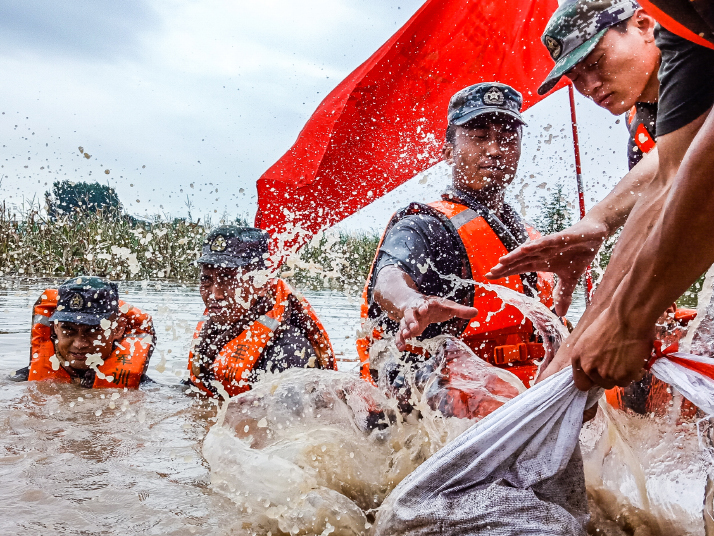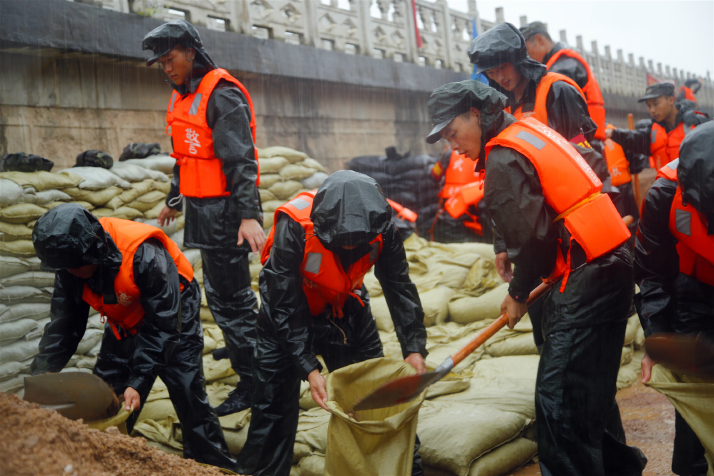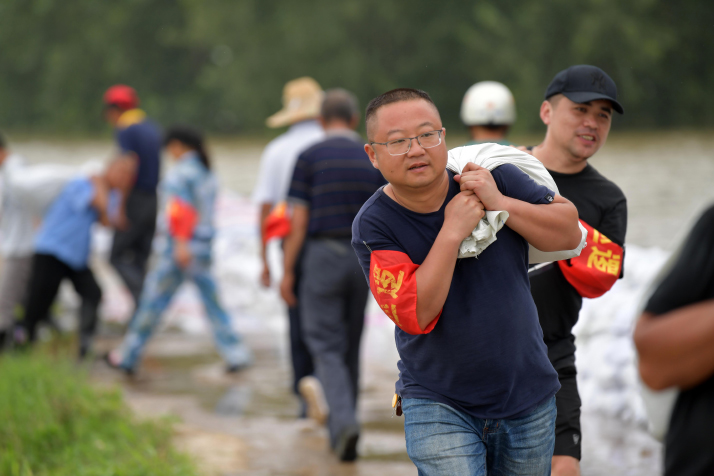|
||||||||||
| Home Nation World Business Opinion Lifestyle ChinAfrica Multimedia Columnists Documents Special Reports |
|
||||||||||
| Home Nation World Business Opinion Lifestyle ChinAfrica Multimedia Columnists Documents Special Reports |
| ChinAfrica |
| Relief efforts move into higher gear in response to worst floods along the Yangtze River in decades |
| This year's average precipitation in areas along the Yangtze is the highest since 1961, up 51 percent from previous years |
| By Ge Lijun VOL.12 August ·2020-07-24 |

In south and east China, the waters of the Yangtze and Huaihe rivers, and Dongting, Poyang and Taihu lakes along the Yangtze, all exceeded alert levels in early July due to continuous downpours. Regions including Chongqing, Jiangxi, Anhui, Hubei, Hunan, Jiangsu and Zhejiang were affected by severe flooding, causing casualties and property losses.

Safeguarding communities
Xu's home village is located in the town of Jiangzhou, which has a population of over 7,000. Most of them are seniors and women, as a large number of young people and men have left to study or work in the cities. Faced with the increasingly severe flooding, on July 10, Jiangzhou called on its expatriates to return home and join in the fight against the floods via the Internet. In two days, nearly 3,000 people answered the call.
Liu Jian was on a business trip to the southern province of Guangdong when he heard this distress message. He immediately rushed to Jiujiang, where his business is located, and took around 10 employees to Jiangzhou with him. They were assigned to patrol a 200-meter dike and monitor the flood situation. They said they protected not only the embankment, but also the people behind them.
Poyang County, more than 100 km from Jiangzhou, was also in a critical condition. The waters in Poyang Lake, the largest freshwater lake in China, had reached a record high, according to the provincial department of water resources.
On the lake embankment, a unit of the People's Liberation Army (PLA) spent 5 hours piling up over 100 gabions on July 13. Their uniforms soaked in sweat, as they managed to eliminate all possible safety risks.
While the soldiers were racing against the clock to fight the floods, many local residents came to their assistance. Yu Fengying, 53, mobilized her friends to cook for those on the frontline, clean their temporary dormitories and help transport sandbags.
Xu Weiming, Secretary General of the Jiangxi Provincial Flood Control and Drought Relief Headquarters, said the Poyang Lake area had seen considerable improvement in the construction of dikes and other flood defense facilities compared to 1998, when a devastating flood occurred along the middle and lower reaches of the Yangtze.
"We will put people first and do everything we can to fight the floods," he said.

Taking responsibility
China has entered a crucial period of flood control, Chinese President Xi Jinping said in an instruction on flood prevention and relief work on July 12. He called for the greatest possible efforts to ensure the safety of life and property of the people.
With the situation becoming more severe, the State Flood Control and Drought Relief Headquarters raised the emergency response to Level II on July 12. China has a four-tier emergency response system for flood control, with Level I being the highest.
According to official statistics, by 7 a.m. on July 13, the floods in 27 provincial regions had affected 38.73 million people, leaving 141 dead or missing, and more than 2.24 million people were evacuated in emergency. About 29,000 homes were destroyed, and direct economic losses reached 86.16 billion yuan (about $12.31 billion).
Zheng said as China's capacity for flood control and disaster relief improves, despite the severity of the floods, the loss of life and property has declined significantly, compared to the previous five years.
Anhui in east China has set up 88 temporary shelter sites to house the evacuees. Nearly 20,000 disaster relief items, including folding beds and quilts, were distributed to heavily affected areas.
More than 7,000 PLA soldiers have been sent to help with flood control and emergency relief operations in eastern provinces. They are responsible for patrolling, repairing and consolidating dikes, as well as evacuating residents trapped by the floods, among others. Photos revealing their hard work have moved many Internet users.
While trying to rescue residents stranded in floods on July 7, two firefighters in Nanchang, Jiangxi, were swept away by the torrents of water and later found dead. "Their courage touched me deeply and I thank them for their sacrifice," wrote one Internet user.
On July 10, Zhou Liangyu joined a group that monitored a dike along the Yangtze in Wuhan, Hubei, after finishing the college entrance exam. He was inspired by his father, Zhou Yangang, who participates in flood control every year. He also postponed his graduation trip. "I will stay until the water recedes," Zhou said.
Printed Title: Fighting the Floods, Together
Comments to glj@chinafrica.cn
| About Us | Contact Us | Advertise with Us | Subscribe |
| Copyright Beijing Review All rights reserved 京ICP备08005356号-5 京公网安备110102005860号 |